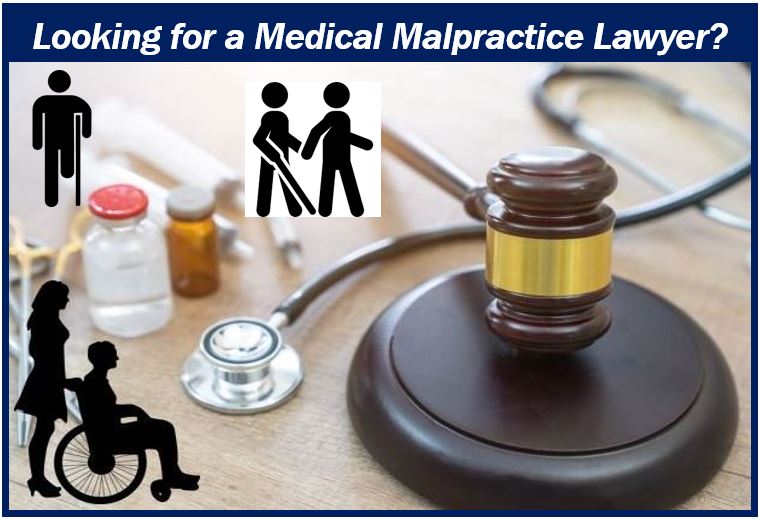The answers to the question of who covers medical errors vary with the situation. The fate of a patient lies with many different practitioners. They include pharmaceutical companies, nurses, doctors, and maintenance employees. Based on the negligence’s source, a patient can obtain compensation for further expenses associated with medical mistakes by suing multiple parties.

Medical Malpractice Case
A medical malpractice case starts with the identification of the source of the medical mistake. Identifying the source of an error in cases of surgical mistakes or misdiagnosis is easy. There are, however, cases where it’s difficult to determine whether or not the error was preventable.
This is especially true in cases where medical professionals follow the established standard of care, but medical problems still arise. Some hospitals may offer follow-up care because medical errors are covered in their insurance policies, but this is uncommon.
In case a court rules that a hospital is responsible for medical mistakes, the victim or the victim’s family can bring a malpractice lawsuit against the entire hospital. The victim can also file a lawsuit against a hospital for the negligent actions of its staff, including nurses, maintenance staff, and some doctors.
The courts usually hold hospitals liable for the actions of their staff, excluding contracted doctors. If a patient suffered injuries due to a contracted doctor’s negligence, he or she can sue the doctor as an individual, without including the hospital as a defendant unless it also contributed to his or her injury.
Types of Medical Errors
Although the law expects medical practitioners to provide patients with the highest standard of care, it also recognizes they are human and can make errors like the rest of the people. What separates a human error from negligence as far as medical malpractice cases are involved is whether the mistake was avoidable.
Negligence doesn’t play part in all medical injuries – many accidents happen regardless of a doctor following the required procedures. If a patient suffers further injuries or infections due to a doctor’s negligence, the court can hold the doctor liable for such injuries.
Medical mistakes usually exacerbate a patient’s condition, instead of addressing it. They usually result in both economic and non-economic damages. The economic damages range from medical expenses to lost earning potential to lost wages. The non-economic ones include emotional trauma and pain and suffering. The following are common types of medical mistakes:
- Misdiagnoses and late diagnoses
- Surgical errors and treatment errors
- Insufficient monitoring
- Medication errors and equipment failures
- Communication breakdown
Which Medical Practitioners are more likely to Be Sued?
According to the National Practitioner Data Bank, nurses are more likely to get sued than all other medical practitioners. In 2016, for instance, 16,094 nurses were sued. Of all those lawsuits, only 287 were resolved with monetary penalties, while 13,016 were resolved with other minor penalties. In the same year, about 14,000 doctors were sued for medical malpractice.
Fostering Patient Safety by Providing Incentives
Although medical mistakes lead to major expenses, hospitals cover only a small percentage of these expenses. They, therefore, have limited financial incentives to implement appropriate patient safety measures.
Numerous payment reforms could come in handy. Health care purchasers could come up with purchasing initiatives specifically designed to reward hospitals that have better patient safety interventions. Leapfrog Group, for instance, links employees to insurance companies that fulfill the highest quality and safety standards.
Another effective option for health care purchasers is to decline to compensate hospitals for expenses related to medical mistakes. The Centers for Medicare and Medicaid Services, for instance, has already declared its intention to curb compensations for “never events.” The National Quality Forum defines never events as events that hospitals can reasonably avoid, such as performing surgery on a wrong patient or making C-section mistakes that inflict a birth injury on a mother or child.
These reforms may be crucial, but researchers of a 2007 CommonWealth Fund-supported study feel they won’t be enough. Medical care expenses are only a small percentage of the overall economic and non-economic losses caused by medical mistakes. Legal reforms to enable more injured individuals to seek compensation for medical errors could significantly increase incentives for hospitals to boost patient safety. Currently, the medical malpractice system compensates only a small proportion of victims of medical mistakes.
Since the current medical malpractice system has proven to be inefficient, researchers are recommending a transition to an administrative compensation system. On top of enhancing accuracy and efficiency, a thoughtfully designed administrative system can boost efforts to track and strengthen patient safety.
An administrative compensation system can open compensation to a large number of patients while helping reduce malpractice expenses by putting justifiable limits to awards. It can also encourage hospitals to investigate medical mistakes quickly and take appropriate actions.
By enabling more patients to access compensation, an administrative compensation system can potentially channel a substantial percentage of the costs of preventable injuries back to the negligent medical practitioners and their insurance providers.
Interesting related article: “What is a Lawyer?“

